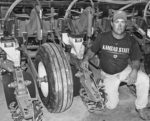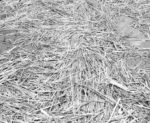Advertise Follow Us
Equipment
Sharing both the work and ideas keeps this no-till team moving in the right direction
Read More
What I've Learned from No-Tilling
Family Tradition Of Trying Things Works Well
This Kansas no-tiller has evaluated strip-till and no-till lowered nitrogen rates by more than 50% and developed a prescription precision ag program
Read More
No Longer Afraid Of Residue
Evenly spreading residue creates a uniform base for planting, better emergence and consistent stands for Nebraska no-tiller Matt Kathol
Read More
Aiming For Planting Perfection In Varying Soil Types
Maintaining openers in tip-top shape, a deeper planting depth and seed meters help Kansas no-tillers achieve even emergence of corn.
Read More
What I've Learned from No-Tilling
Bending Equipment, Agronomics To Fit His Needs Pays
South Dakota no-tiller Terry Huss modifies new equipment to fit his dry conditions and goes against the trend by growing wheat with corn and soybeans.
Read More
Making The Move To 30-Inch No-Tilled Soybeans
Reducing planting rates by 30,000 seeds per acre without a yield loss is convincing Keith Reha to move away from 15-inch soybeans.
Read More
Grid Sampling Saved Years Of No-Till From The Chisel Plow
Struggling fields returned to their yield-contest-winning potential once an Ohio no-tiller applied variable-rate lime and fertilizer.
Read More
No-Tiller Always Ready To Face Changing Conditions
Adjustments to seeding rates, downpressure and coulter depth within fields are necessary for Johnny Davis to no-till successfully in variable soil conditions.
Read More








.png?height=125&t=1731942302&width=150)





